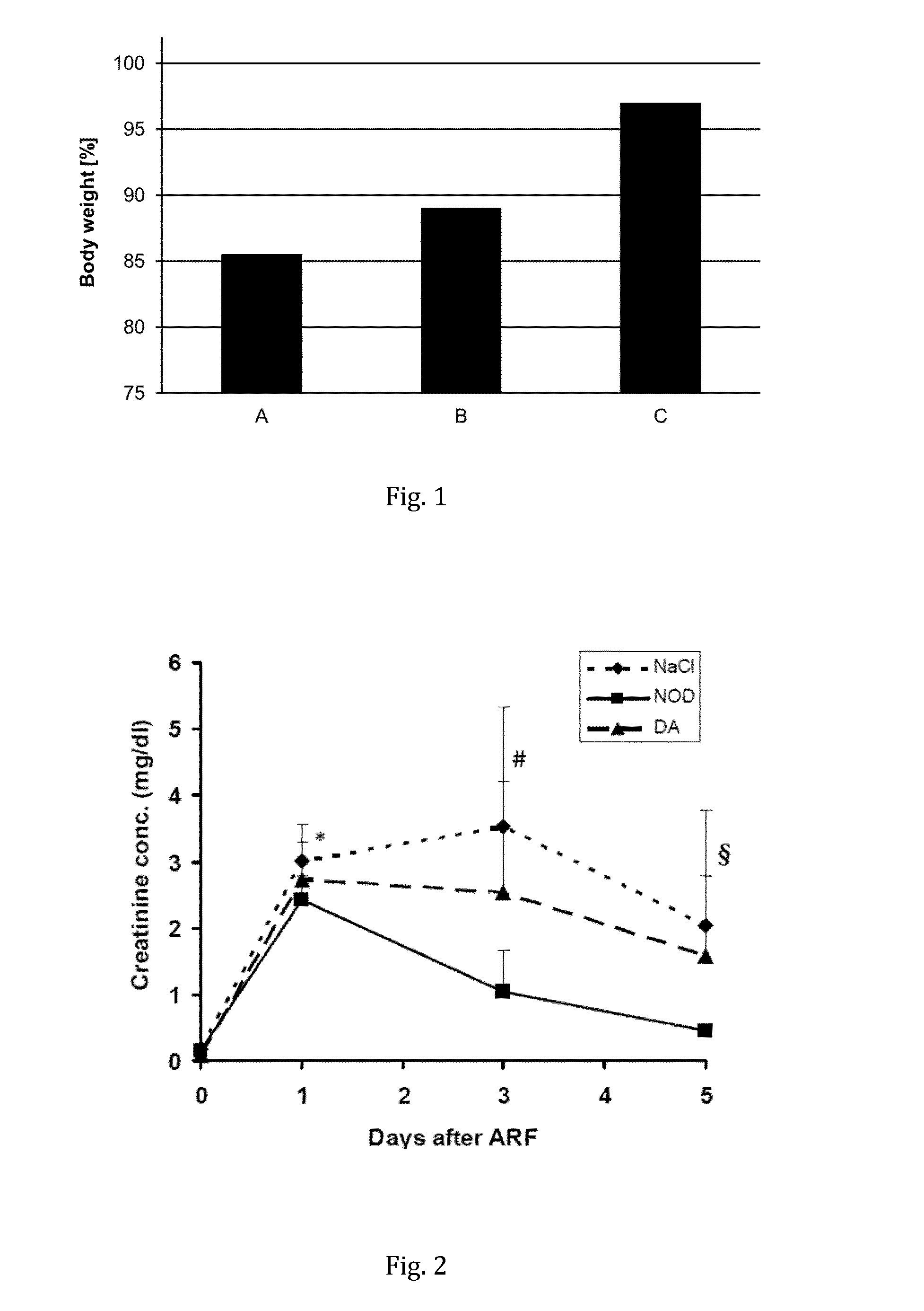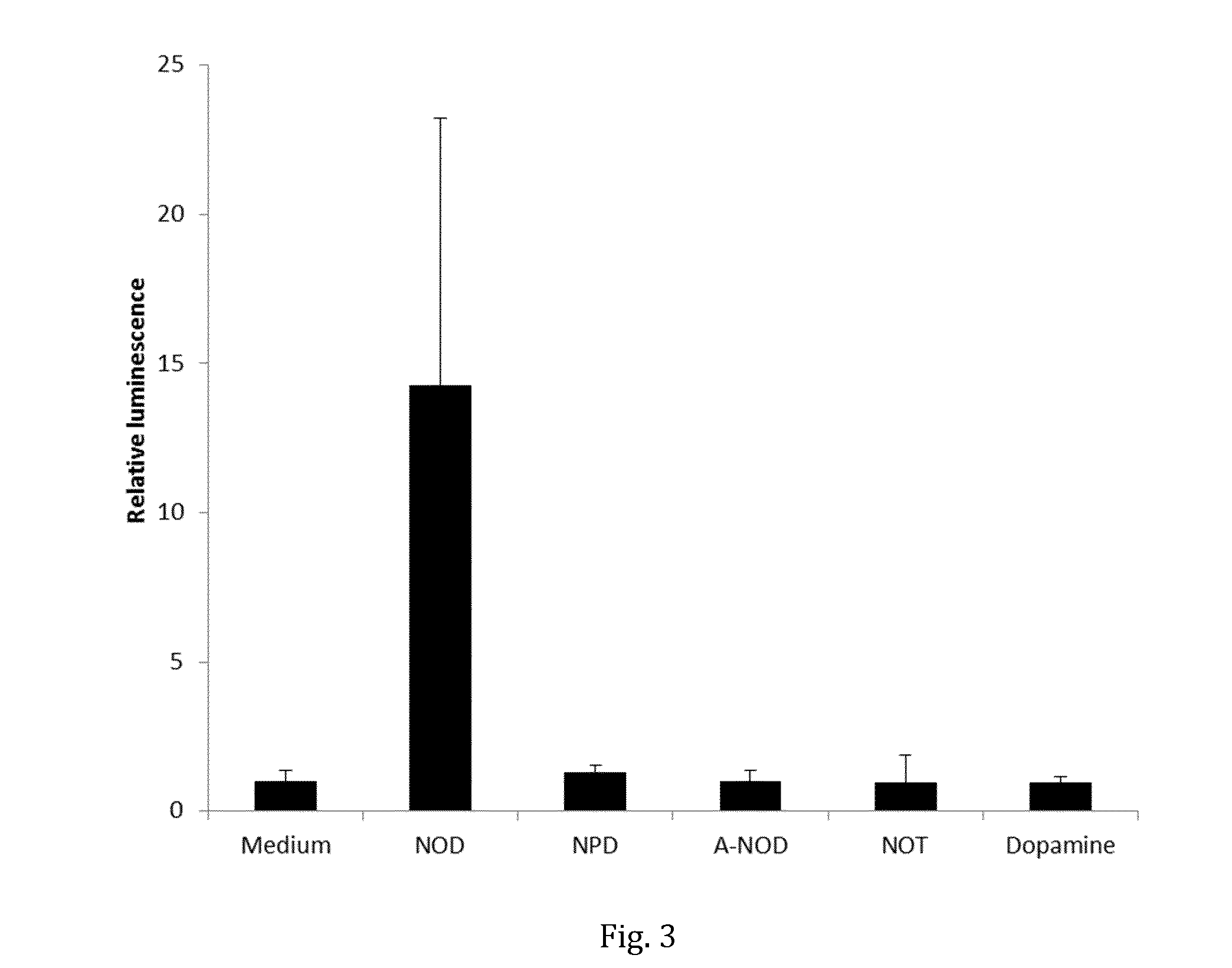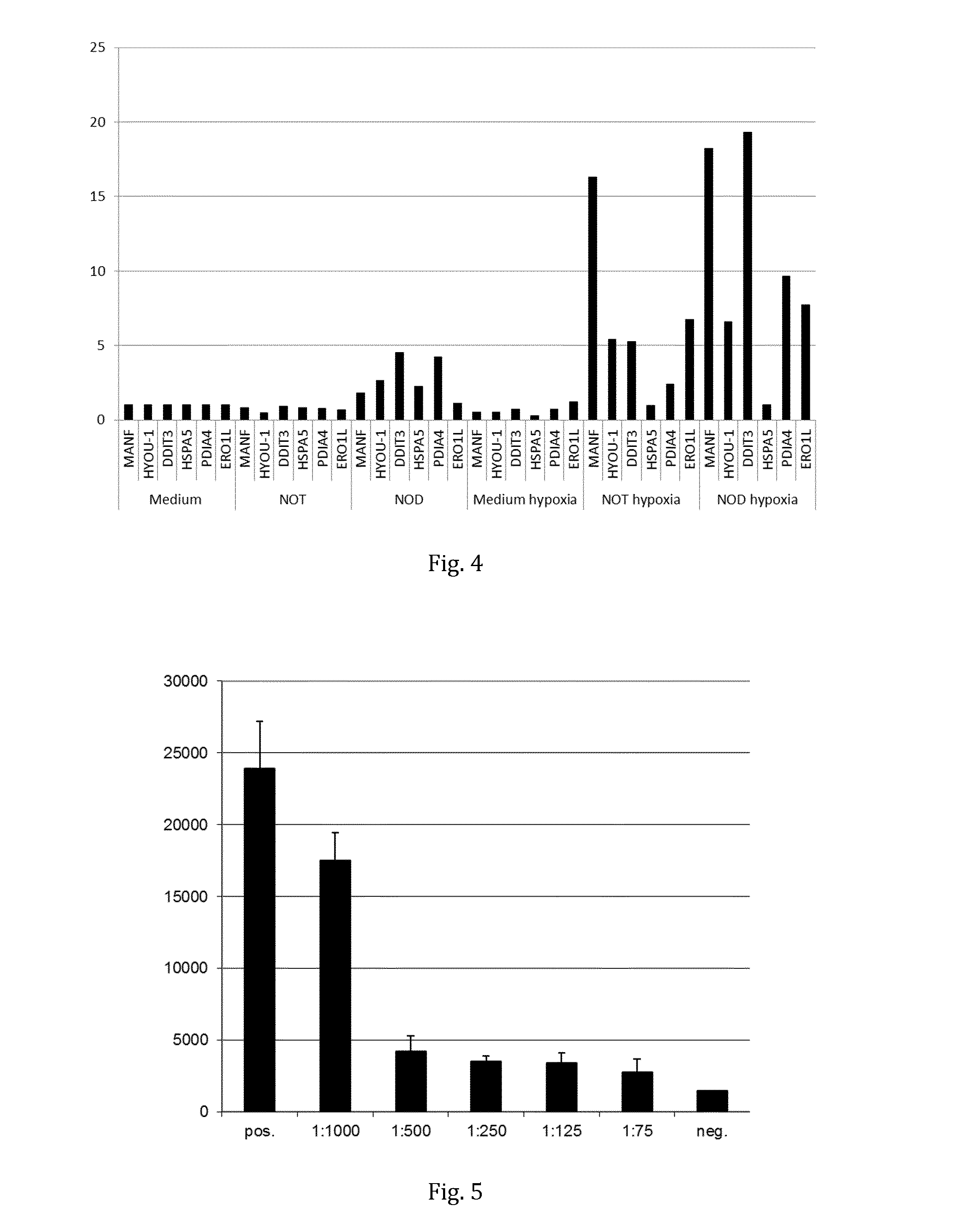Lipophilic dopamine derivatives and their use
a technology of dopamine and lipophilic cells, applied in the field of lipophilic dopamine derivatives, can solve the problems of reducing the long-term survival of brain dead donors, unable to carry out transplantation, so as to reduce the number of ed1-cells, and reduce the effect of tnf- activity in renal tissue as measured by pcr
- Summary
- Abstract
- Description
- Claims
- Application Information
AI Technical Summary
Benefits of technology
Problems solved by technology
Method used
Image
Examples
example 1
Preparation of N-Octanoyl Dopamine (NOD)
[0097]Step 1: Ethyl chloroformate (69.1 mmol) was added carefully over a period of 10 minutes under vigorous stirring to a solution of octanoic acid (69.3 mmol), i-Pr2NEt (69.6 mmol) in 90 mL of anhydrous THF. The resulting mixture was stirred at room temperature (RT) for approximately 3 h and then 50 mL ethyl acetate and 100 mL water was added. The organic phase was separated, dried over anhydrous MgSO4 and concentrated. The resulting crude mixed anhydride product was used in the next step without further purification.
[0098]Step 2: Dopamine hydrochloride (66 mMol) was dissolved in 50 mL of DMF. A solution of the mixed anhydride solution in 50 mL of ethyl acetate was added dropwise over a period of 20 minutes. An additional equivalent of i-Pr2NEt (66 mMol) was then added to the resulting cloudy reaction mixture, which was stirred over night at room temperature and under darkness. To the reaction mixture was then added 200 mL of aqueous NaHCO3 ...
example 2
Preparation of N-(3,4-bisacetoxyphenethyl)octanamide
[0099]N-octanoyl dopamine (25 mMol) and sodium acetate (30.5 mMol) were added to 30 mL of acetic anhydride. The reaction mixture was stirred at 80° C. for 3 h, then poured onto 100 mL of ice-cold water and stirred for 10 minutes. The mixture was filtered and the precipitate was washed with three portions of ice-cold water. Recrystallisation twice from Et2O afforded N-(3,4-bisacetoxyphenylethyl)octanamide in 65% yield; m.p. 76° C. (heating rate: 1° C. / min).
example 3
Effect of N-Octanoyl Dopamine on Body Weight in ARF Rat Model
[0100]Kidneys of Lewis rats (n=8) were clamped for 45 min to induce acute renal failure (ARF). Afterwards the rats were treated with continuous infusions (10 μL / h over 5 days) of either saline, dopamine or N-octanoyl dopamine (NOD), using an osmotic minipump. The concentration of dopamine and NOD was 40 μmmol / mL. The rats' body weight was monitored for 5 days. While the saline- and dopamine-treated rats lost ˜14% and ˜11% of their body weight due to the ARF, there was no significant change in the weights before and after the ARF for the NOD-treated rats, as shown in FIG. 1.
PUM
 Login to View More
Login to View More Abstract
Description
Claims
Application Information
 Login to View More
Login to View More - R&D
- Intellectual Property
- Life Sciences
- Materials
- Tech Scout
- Unparalleled Data Quality
- Higher Quality Content
- 60% Fewer Hallucinations
Browse by: Latest US Patents, China's latest patents, Technical Efficacy Thesaurus, Application Domain, Technology Topic, Popular Technical Reports.
© 2025 PatSnap. All rights reserved.Legal|Privacy policy|Modern Slavery Act Transparency Statement|Sitemap|About US| Contact US: help@patsnap.com



